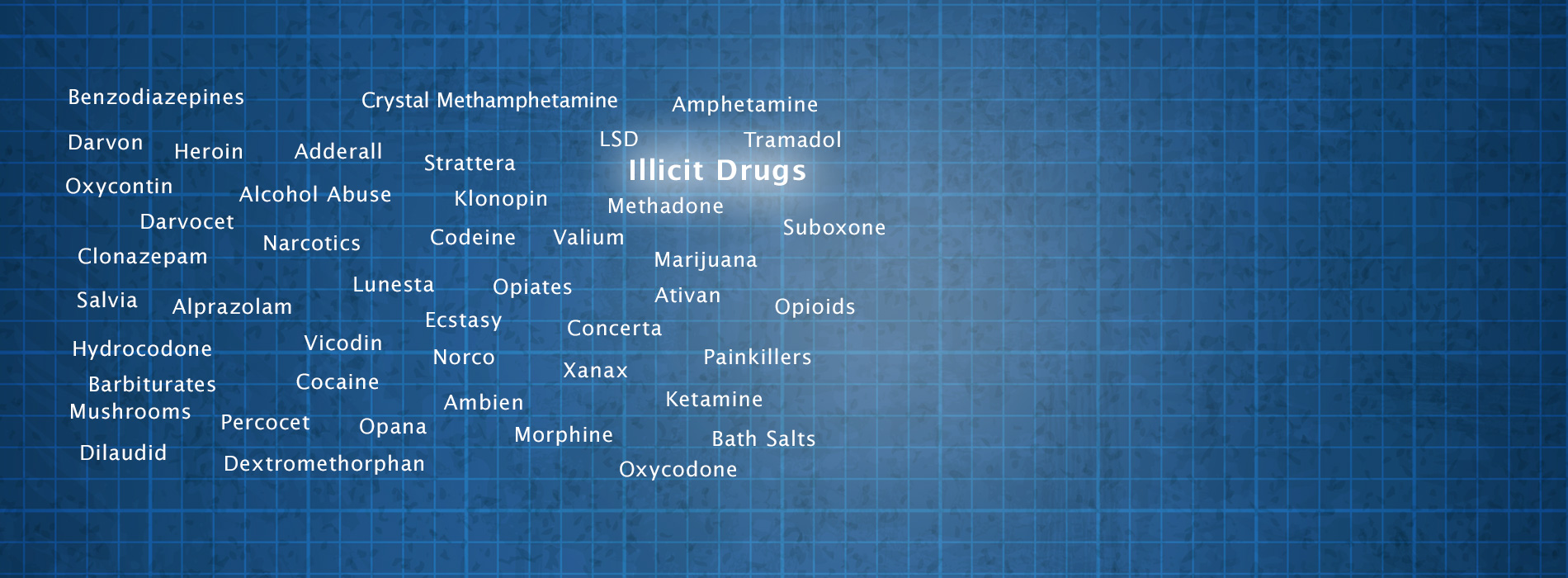Illicit Drugs
Illicit drug use and abuse often leads to severe consequences, as in jail time or a prison sentence. According to the National Institute on Drug Abuse (NIDA), 70 percent of prison entrants report using substances in the year prior to incarceration. Men are more likely than women to have used drugs before entering prison, also. Among young people aged 18 to 44, around 73 percent have used an illicit drug during the previous 12 months.Illicit drug use and addiction is one of the worse types of addict problems. Illicit drugs are illegal to make, use, and/or sell, and include cocaine, methamphetamines, heroin, and various hallucinogens. Also, most of these substances are highly addictive and carry serious health consequences and risks, even when consumed in small or infrequent doses. While it begins as experimentation, illicit drug users often find themselves dealing with the mental and physical effects of the drug and withdrawal from the substance. A person can become addicted easily and endanger the safety and health of others. Researchers have found that addiction is a brain disease, which is characterized by chronic relapses and abnormalities in certain brain pathways.
Categories of Illicit Drugs
Illicit drug effects are dependent upon the substance. The main categories are opioids, stimulants, sedatives, and hallucinogens. These drugs are categorized based on their effects. These include:
- Opioids – Painkillers and heroin that alter chemicals in the brain responsible for mood regulation, slow down the central nervous system, and decrease breathing effort.
- Stimulants – Methamphetamines and cocaine lead to increased heart rate, excessive brain activity, and a state of hyperactivity.
- Sedatives – Drugs such as Xanax and Valium are sedatives, and these cause a slowing down effect, drowsiness, and confusion.
- Hallucinogens – LSD, mushrooms, and marijuana can alter perception of time, space, and reality.
The Signs of Illicit Drug Addiction
There are certain behaviors that indicate an addiction to an illicit drug. These include:
- Aggressive behavior, violence, and/or mood swings
- Unusual or sudden change of energy level
- Preoccupation with obtaining and using a certain drug
- Isolation from family and friends
- Chronic mental and physical health problems
- Inability to attend work or social activities
- Legal consequences, such as loss of job or an arrest
- Behavior that violates values and/or morals for the purpose of getting a drug
Treatment Options
- Inpatient rehab program – This is best for individuals who suffer from severe illicit drug addiction. Doctors, therapist, and counselors monitor the addict to provide safety and a healthy environment for recovery.
- Outpatient rehab program – These facilities work for the addict who wishes to maintain his or her job or for those who have families. The person attends group activities and classes at the facility, but returns to home and daily activities.
- 12-Step program – NA and AA are both good 12-step programs that offer support to people with addictions. These programs use the 12-step concept in order to help a person manage obsessions and compulsions of addiction.
- Psychotherapy – Drug addiction often coexists with emotional and or mental health issues. This can lead to self-destructive patterns without appropriate psychotherapy.
References
National Institute on Drug Abuse

